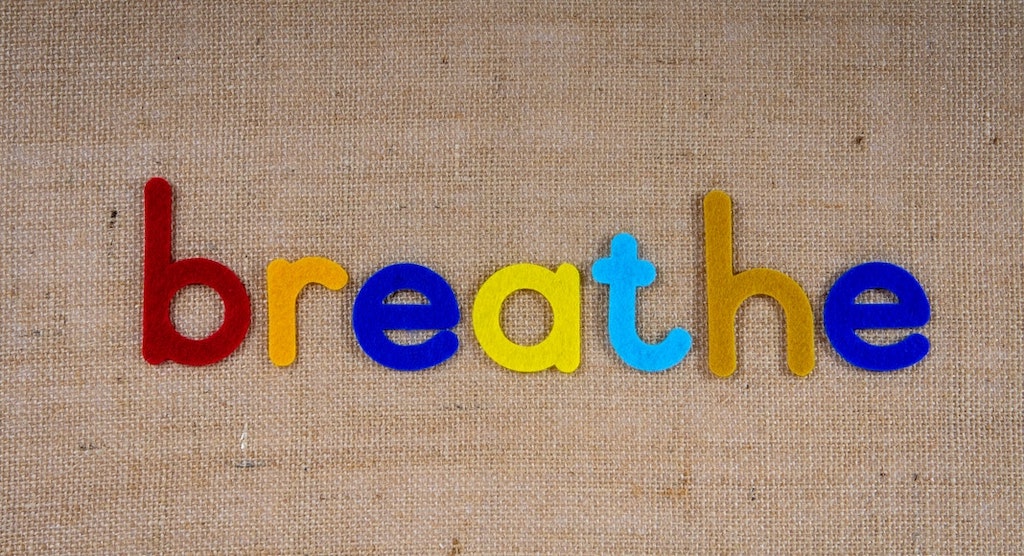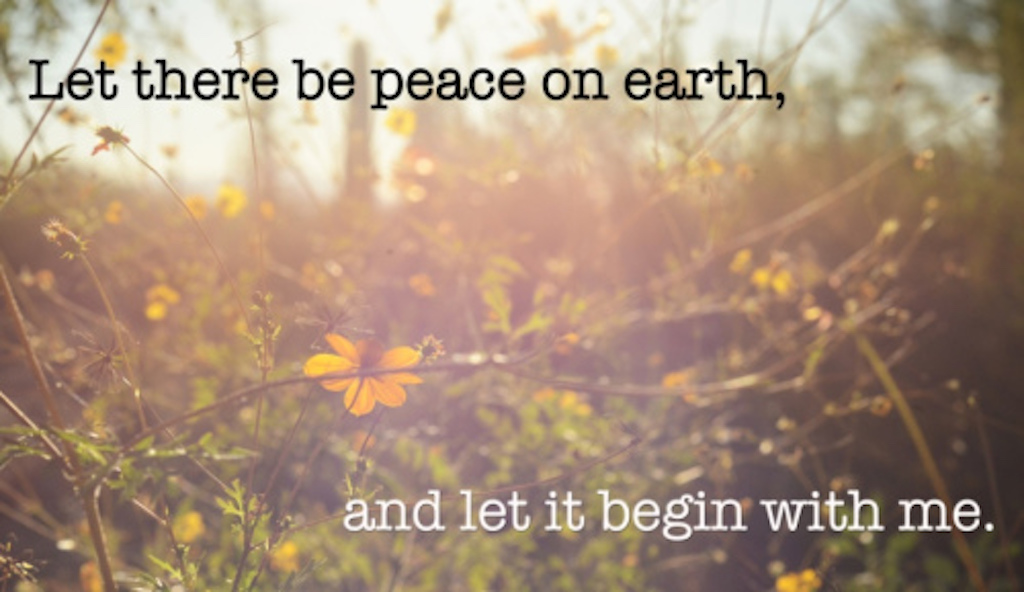The election is over. Mostly. There are aftershocks like never before. It’s doubtful they will change the outcome, and certainly not what many experienced on November 7. There was an audible and collective exhale felt around the world.
I heard so many people say, “Now, I can breathe.” The magnitude of the collective breath we were holding was palpable. The tensions of Covid. The tensions of Black Lives Matter. The tensions of our children not in school. The tensions of working from home, or worse, not having a job. The tensions of the election and its impact on our lives and the future of our children’s lives. These tensions were compounding - far beyond the interest in our bank accounts!
I’m an advocate for breathing. I practice breath-work and I teach it everyday to every age. I thought I was breathing. I had no idea I was holding my breath too. Until, I let it go. I felt it flow. It made me realize, we often have no idea that we’re holding our breath. This is especially true for mothers.
Our babies cry and it sends a lightening bolt through our bodies. (BTW, this never changes. I have two teenagers and I still feel that bolt when they are in distress.) That moment usually includes an inhale, but not necessary an exhale. Those moments add up in typical daily life - and are exacerbated in the out of ordinary life we are living nearly everyday of 2020.
Our bodies seek rhythm. Breath has rhythm. We are often unaware of our breath. It is the practice of becoming aware of our breath that can help us establish a rhythm to manage various and constant states of stress that assault our nervous systems.
Breathing is the one conscious action we can take to help slow down your automatic response system and diminish the affects of fight, flight, freeze or faint!
You may already know this! What I discovered, is Knowing is not Doing. We must do it! Here’s the practice part. Everyday. Every moment you feel tension. Try this:
- Sip in a breath like your are sipping through a straw. It will feel cool in your mouth. Inhale all the way to the top - no more air can come in.
- Pause at the top for a moment.
- Then release it slowly like you’re blowing out a candle - lots of candles! Exhale all the way out to the bottom - until there is no more air.
- Pause at the bottom for a moment.
- Repeat this 2 to 5 times depending on the situation.
With consistency, this practice becomes a new norm when the lightening bolts strike. My kids know when I am breathing, I’m processing and preparing my response. They have learned to wait for it. Ninety-nine percent of the time their need is not an emergency, it just feels like it! This helps us all regulate and solve problems calmly.
Regardless of your preference for President. Now, we can breathe. Now, we can solve problems. There is much healing required in our nation. To be the United States, we must unite within ourselves - body, mind and heart - and reflect that unity outward in everything we do. Here we go!
Americans are stressed: Last month, the American Psychological Association found that 68% of adults surveyed say the 2020 election is a significant source of stress in their life – up from 52% in 2016. Across the board, Republicans, Democrats, and Independents are significantly stressed. And Black adults had an even greater increase in stress from the election, from 46% in 2016 to 71% in 2020.
Be aware of heightened tensions. Kids feel this a lot! Not only their own daily stresses with schedules, homework and friendships, but with the collective “second-hand” stress they absorb from their adults and the community. Take a breath in and out for Peace. At IYK, we often share with the kids, “Peace Begins with Me.” This is the mantra for every day. As we approach Election Day, it’s time to breathe - to practice what is in our control and what is not.
Our friends at YogaX at Stanford explored the breath. Breathing as a part of a yoga practice, also known as pranayama, is not just practicing deep breathing, or breathing exercises for the physical body. Prana can be thought of as energy, life force, or life giving, while the second part of the word, ayama, means unrestrained or free. By having pranayama be an essential component of our yoga practice we give ourselves the opportunity to see how our breath has the power to influence and transform our psychological and emotional wellbeing.
And we, at It’s Yoga Kids, know it works for the whole family! Breathe deeply. Take care.
How can yoga help expecting and new parents during the pandemic?
It’s pregnancy and infant loss awareness month. We feel Priscilla Blossom’s honest and heartbreaking essay about the ‘easy’ pregnancies she will never have.
Even “easy pregnancies” seem to be non-existent with tremendous uncertainty everywhere. Jessica Grose, lead editor for NYT Parenting writes, “I have never had an easy pregnancy. My first was marred by depression, anxiety and extreme morning sickness, or hyperemesis; my second ended in a miscarriage; my third was the best of the lot, but I still felt nauseous and exhausted the entire time, and had a six-week-long sinus infection in the middle of it. I feel incredibly lucky to have had two healthy babies after those pregnancies, but I still mourn for those unhappy months, and wish they had been otherwise.”
The number of babies born in the U.S. hit the lowest level in more than three decades in 2019, continuing a five-year downward trend, according to a federal report. The numbers for 2020 are not confirmed yet. For those having babies, the experience varies greatly from our pre-pandemic lives including the stress of birthing in the hospital shared by Covid-19 patients.
In some ways, the pandemic is a blessing for new parents and their babies. The bonding time with both parents and any siblings at home is an unusual gift for a new baby and growing family. Working From Home (WFH) has enabled many fathers to have time with their babies not otherwise available to them.
In other ways, the pandemic is an incredibly isolating time when new parents, moms especially, would be socializing with other new moms and babies in person about the trials and tribulations of their new worlds. The community element of parenthood is essential. Yoga can help us manage stress and uncertainty even in the best of times and certainly in the worst.
Breathe.
Breathe the loss. Breathe the gift. Breathe the pain. Breathe the relief. Breathing works. It’s not easy especially when someone is telling you to do it. It actually makes most of us MAD! But it works. It’s the fastest and most conscious way to calm your nervous system. It works every time. It takes practice. If you can’t find your own breath when in distress, it’s helpful for your partner or a family member or friend to model it for you in the moment. When they breathe, we tend to match their breath and co-regulate. This is most effective for partners and parents with young children. And teenagers! Calming those frustrating moments when we’re all on top of one another is critical!
Move.
Moving shifts energy. It’s that simple. Yoga, in particular, moves every muscle and unsticks - stickiness. I like to think of it as loosening sediment in the body - the kind that’s stuck at the bottom of your delicious wine bottle. We loosen it and decant it to filter it out. That’s what yoga does for your body. Downward dog does wonders. Get on on your hands and feet and shake out each limb. You will feel better for it. Everyday! It’s great for pregnancy and beyond.
Be Still.
Otherwise known as meditation. Being still with oneself is the most challenging and most rewarding of all. To allow all the feelings to bubble up. To feel them. To BE with them. To hold yourself. Sparkling wine tastes better and sometimes has the same effect. But it’s not sustainable. Stillness is. There is no required form here. You can lie down or sit, or curl into the fetal position yourself. It’s our protective instinct to get as small as possible. Hide from pain. Hide from fear. But something happens when you just let it all spill over in silence with yourself. It’s freeing. Something lifts and restores you. With practice it works. There is no right way. Try it anyway your body wants to.
If you have that precious bundle, love ‘em up and look for a class to connect with parents and babies online or outdoors. Enjoy this unprecedented time to the best of your ability. Be present with yourself and your struggles and celebrate your gifts and joys!
Are you and your kids already Zoomed out from distance learning?
It's Yoga Kids® has the perfect BREAK. Think of it as a mini-recess to be used at any point when you need to turn off the screen and turn on your mindfulness.
B Breathe in the fullest breath
R Rest your head on your desk
E Exercise with stretching
A Activate your core strength
K Kick up your feet
To learn more about BREAK and to see it modeled for you, be sure to watch Michelle’s video. Then let us know how it works for you and your kids. Comment and subscribe to our YouTube channel. We need 100 subscribers. More videos to come!



